The ancient craft of pickling transcends mere preservation, evolving into a culinary art that marries flavor with longevity. At the heart of this tradition lies the indispensable glass pickle jar, a silent yet pivotal protagonist that ensures the integrity and taste of its contents are impeccably maintained. This comprehensive Q&A guide from Smilebottles ventures deep into the intricacies of choosing, utilizing, and ingeniously repurposing glass pickle jars. It unravels the myriad secrets these containers hold, offering valuable knowledge and innovative ideas to both beginners and seasoned aficionados of the pickling world. Through exploring these aspects, the guide illuminates the pivotal role of glass pickle jars in transforming simple ingredients into gastronomic treasures.
Table of Contents
ToggleCONTENTS LIST
Q1: What is the best type of jar for pickling and why?
Q2: How can you ensure a proper seal on pickle jars for long-term storage?
Q3: What are some creative ways to reuse pickle jars after the pickles are gone?
Q4: How do you remove pickle odors from jars for reuse?
Q5: What are the best practices for sterilizing pickle jars before use?
Q6: Can pickle jars be sealed without a canning process, and if so, how?
Q8: How do variations in jar size and shape affect the pickling process and the end product?
Q1: What is the best type of jar for pickling and why?
The quintessential choice for pickling is undoubtedly the glass Mason jar, celebrated for its unparalleled suitability and functionality in the pickling process. This preference is not arbitrary. Glass, by its very nature, is inert, ensuring that no chemical interactions compromise the taste or safety of the pickled goods within. Mason jars, in particular, are designed to withstand the high temperatures involved in the sterilization and canning processes, crucial for ensuring the longevity and safety of pickled creations. Their airtight seal is key to preventing unwanted bacteria from spoiling the contents, while the transparent material allows for easy monitoring of the pickling progress. Furthermore, Mason jars come in a variety of sizes, catering to every need from small batches of gourmet pickles to larger quantities for family use, making them the unparalleled champion in the realm of pickling containers.
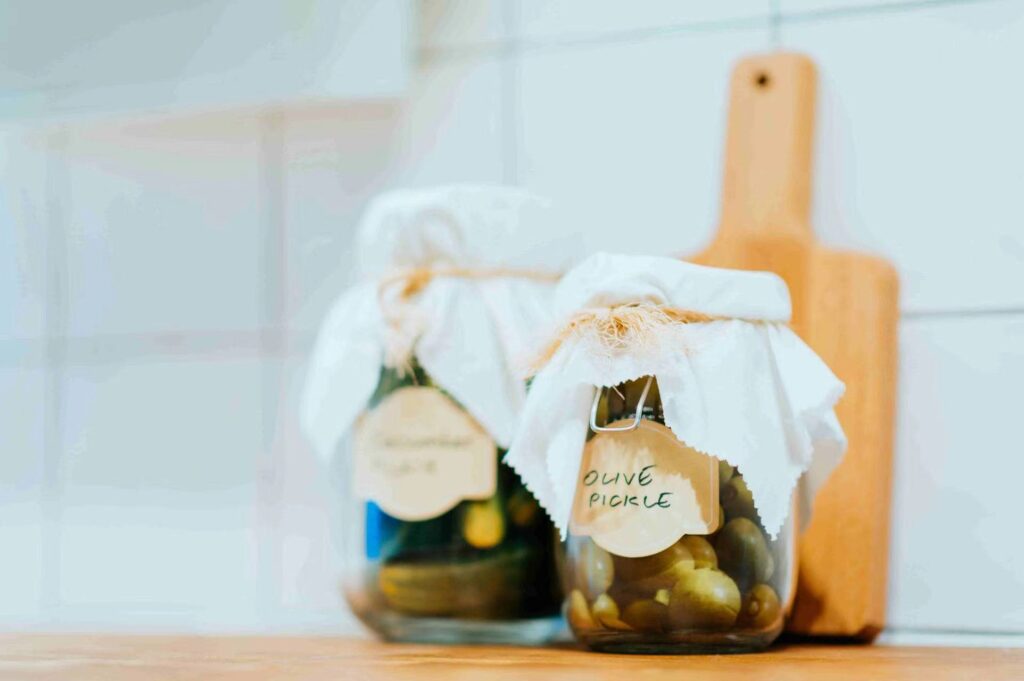
Q2: How can you ensure a proper seal on pickle jars for long-term storage?
Ensuring a proper seal on pickle jars for long-term storage is fundamental to preserving the freshness and safety of your pickles. The process begins with meticulous sterilization of both the jars and lids to eliminate any bacteria that could compromise the seal or the contents. After filling the jars with your pickles and brine, leaving the appropriate headspace as recommended, wipe the jar rim clean of any residue to ensure a good seal.
For the sealing process, we can use the water bath canning method. Place the filled and closed jars in a canner filled with boiling water, ensuring they are completely submerged. Boil for the time specified by your recipe, adjusting for altitude as necessary. This process not only sterilizes the contents but also expels any air from the jar, creating a vacuum as it cools.
Once cooled, check the seal by pressing the center of the lid. If it does not pop up and down, the jar is sealed properly. A proper seal is crucial as it prevents air and microorganisms from entering the jar. Thereby preserving the pickles’ quality and safety during storage. Store the sealed jars in a cool, dark place to further prolong their shelf life.
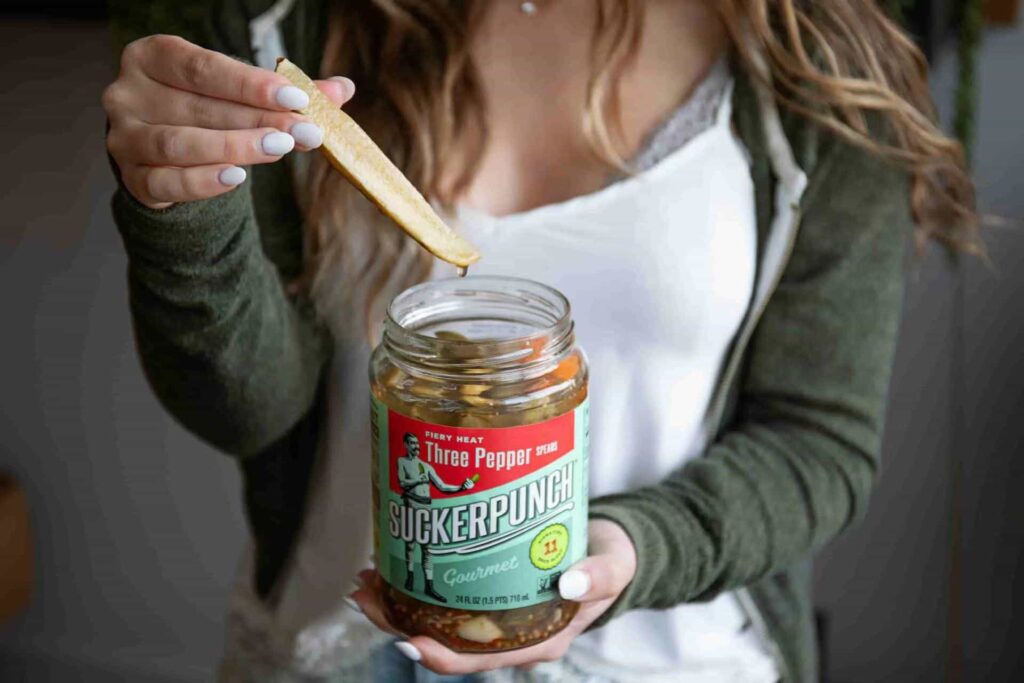
Q3: What are some creative ways to reuse pickle jars after the pickles are gone?
Once you’ve savored the last pickle, the journey of the glass jar doesn’t end. These versatile containers can embark on a second life, finding new purpose in both practical and decorative roles.
For the culinary enthusiast, emptied pickle jars become ideal vessels for storing spices, grains, or homemade sauces, their clear sides offering a visual inventory of kitchen staples. For those with a green thumb, these jars can become miniature terrariums or planters. Creating lush, compact ecosystems or homes for small plants.
The organizational potential of pickle jars is immense. They can neatly store office supplies, buttons, or any small household items, bringing order and clarity to desks and drawers. We may also repurpose them into homemade candles, filling their interiors with fragrant waxes for a cozy ambiance.
These pickle jar kitchens can also be integrated into home décor. They can serve as vases for fresh flowers vase containers for DIY projects, or layered gift jars. The possibilities are as limitless as imagination, making the repurposing of pickle jars an exercise in creativity and sustainability.
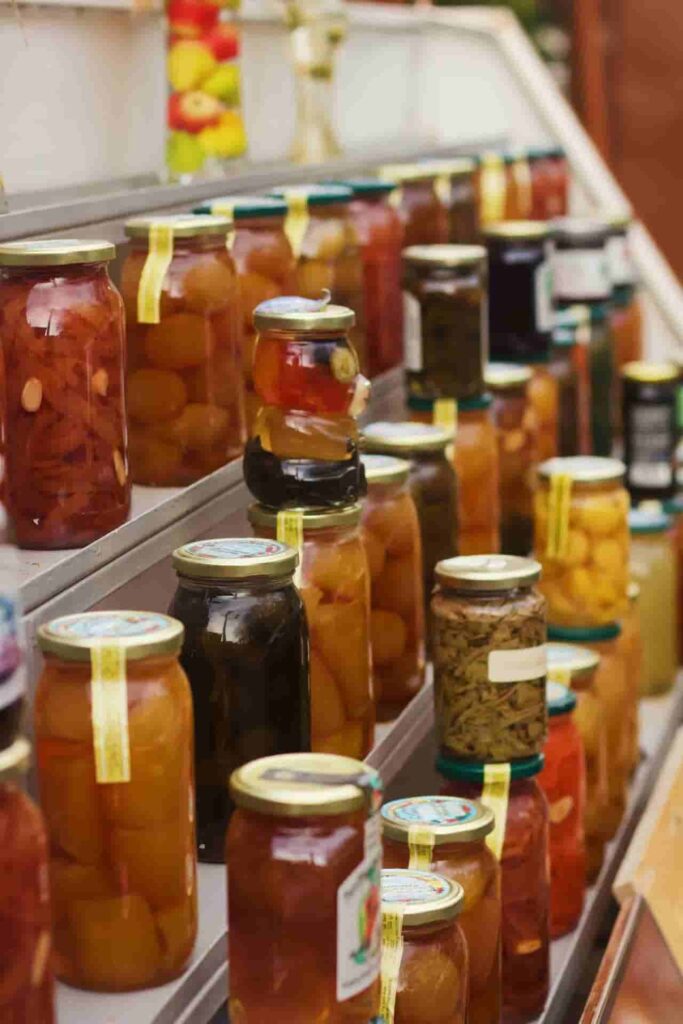
Q4: How do you remove pickle odors from jars for reuse?
Soak the glass pickle jars in a solution of warm water mixed with either baking soda or vinegar is an effective method to eliminate pickle odors. These natural deodorizers work wonders in neutralizing stubborn smells. Begin by filling the jar with warm water and adding a tablespoon of baking soda or vinegar. If opting for baking soda, gently stir to dissolve. Allow the jar to sit with this solution for several hours, or even better, overnight. To ensure the odors are thoroughly absorbed and neutralized.
For particularly persistent smells, consider repeating the process or adding a few drops of dish soap to the mix. After soaking, rinse the jars thoroughly with clean water. A soft brush can help remove any residual odor-causing particles. This method ensures that your glass jars are not only clean but also free from any lingering pickle odors, ready for their next use with a fresh start.
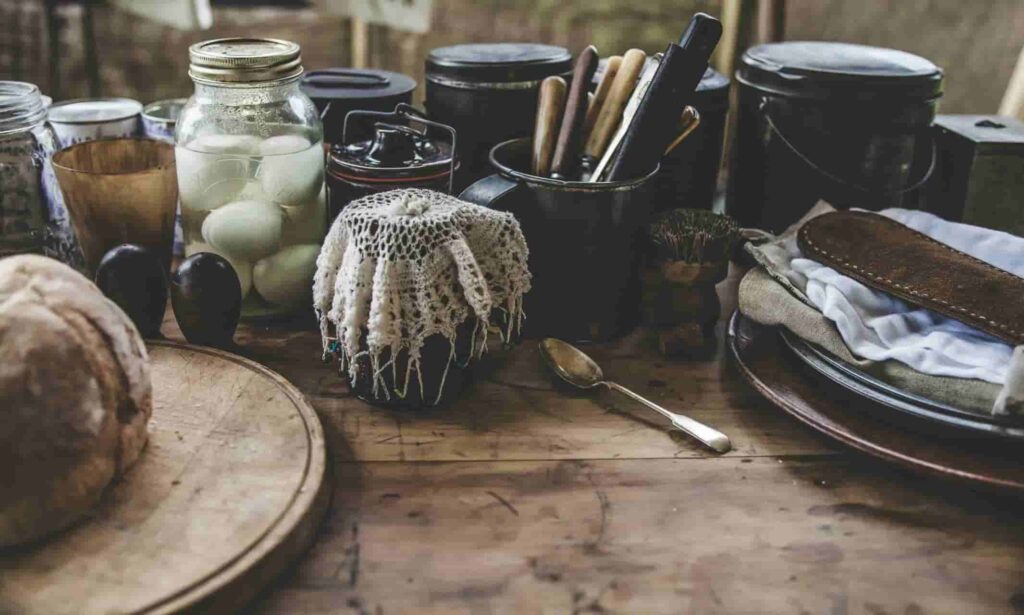
Q5: What are the best practices for sterilizing pickle jars before use?
Sterilizing pickle jars with lids is a critical step in the pickling process. Which ensures the safety and longevity of the preserved foods. The most reliable method for sterilization is boiling them in water. Here’s a step-by-step guide to ensure your jars are properly sterilized:
○ Clean Thoroughly: Before sterilizing, wash the jars and lids with hot, soapy water. Rinse them well to remove any soap residue.
○ Prepare Your Water Bath: Fill a large pot or canner with enough water to completely submerge the jars. Ensure there’s enough space for the water to cover them by at least an inch. Bring the water to a simmer.
○ Submerge the Jars and Lids: Using a jar lifter or tongs, carefully place the clean jars and lids into the simmering water. If you’re sterilizing multiple jars, ensure they do not touch each other to allow for even heat distribution.
○ Boil for Sterilization: Once all the jars and lids are in the pot, increase the heat to bring the water to a full rolling boil. Let them boil for at least 10 minutes, adjusting the time based on your altitude (you may need to extend the boiling time at higher elevations).
○ Carefully Remove and Dry: After the sterilization process, use tongs or a jar lifter to remove the jars and lids from the water. Place them on a clean, towel-lined surface to dry. Avoid wiping the insides of the jars and lids to maintain sterility.
○ Keep Sterile Until Use: It’s best to fill the jars while they’re still warm. If there’s a delay in filling them, cover the sterilized jars with a clean towel to prevent contaminants from settling inside.
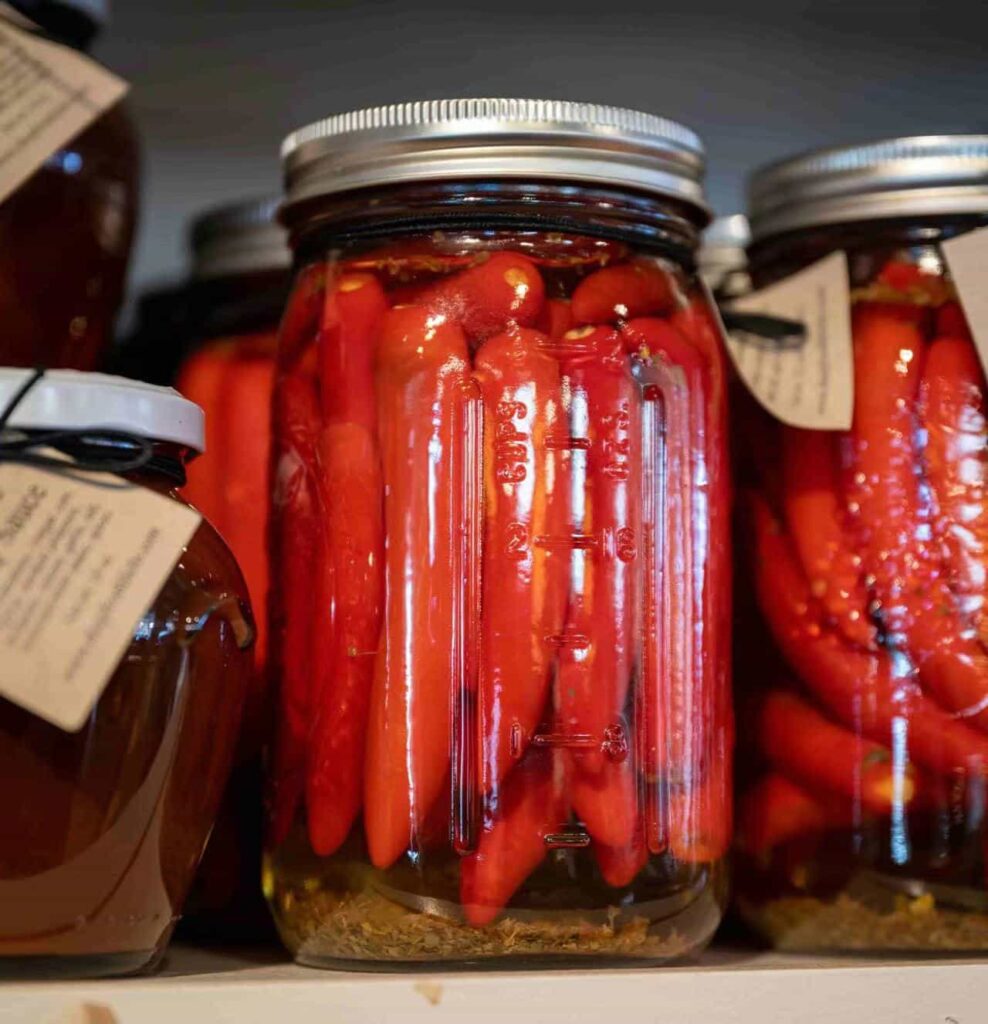
This method eliminates harmful bacteria and other contaminants, creating a safe environment for your pickles. By following these best practices for sterilizing pickle jars, you’re taking an essential step towards. It’s the key to ensuring the quality and safety of your homemade pickled products.
Q6: Can pickle jars be sealed without a canning process, and if so, how?
Absolutely! Pickle jars can indeed be sealed without undergoing the traditional canning process. The method is popularly known as making “refrigerator pickles.” This technique is straightforward and accessible, perfect for those looking to enjoy homemade pickles without the need for specialized canning equipment. Here’s how to do it:
○ Prepare Your Pickles: Pack your clean, sterilized jars with fresh vegetables of your choice. Common options such as cucumbers, carrots, and green beans, but feel free to experiment.
○ Make the Brine: Combine water, vinegar, salt, and your desired spices in a saucepan. Heat the mixture just until the salt dissolves, then allow it to cool slightly.
○ Fill the Jars: Pour the brine over the vegetables in the jars, ensuring the liquid completely covers them. Leave a bit of space at the top of the jar to allow for expansion.
○ Seal and Store: Tightly screw on the lids and place the jars in the refrigerator. The cool temperature inside the fridge slows down the fermentation process, allowing for a controlled pickling environment.
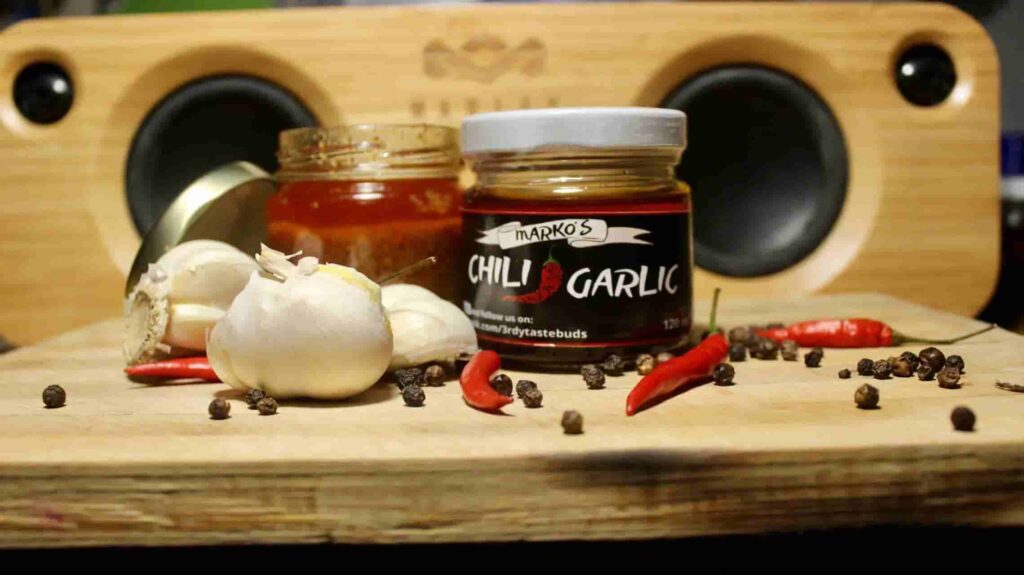
Refrigerator pickles are ready to eat after a few days. However, allowing them to sit for a week or more will further develop their flavors. While this method is incredibly convenient, it’s important to note that refrigerator pickles have a shorter shelf life compared to those sealed through traditional canning. Typically lasting up to a month or two when kept refrigerated. This approach provides a simple and safe way to enjoy homemade pickles with minimal effort and equipment.
Q7: What are the differences between commercial and homemade pickle jars in terms of health and taste?
The comparison between commercial and homemade pickle jars reveals significant differences, particularly concerning health and taste aspects.
Commercial pickles often contain preservatives to extend their shelf life, while homemade pickles usually do not. This absence of added preservatives in homemade pickles means you’re consuming a cleaner product, closer to its natural state. Sodium is commonly used in pickling for flavor and preservation. However, commercial pickles can have a high sodium content to enhance taste and longevity. In contrast, when making pickles at home, you have complete control over the amount of salt used, allowing for a healthier, less sodium-laden option.
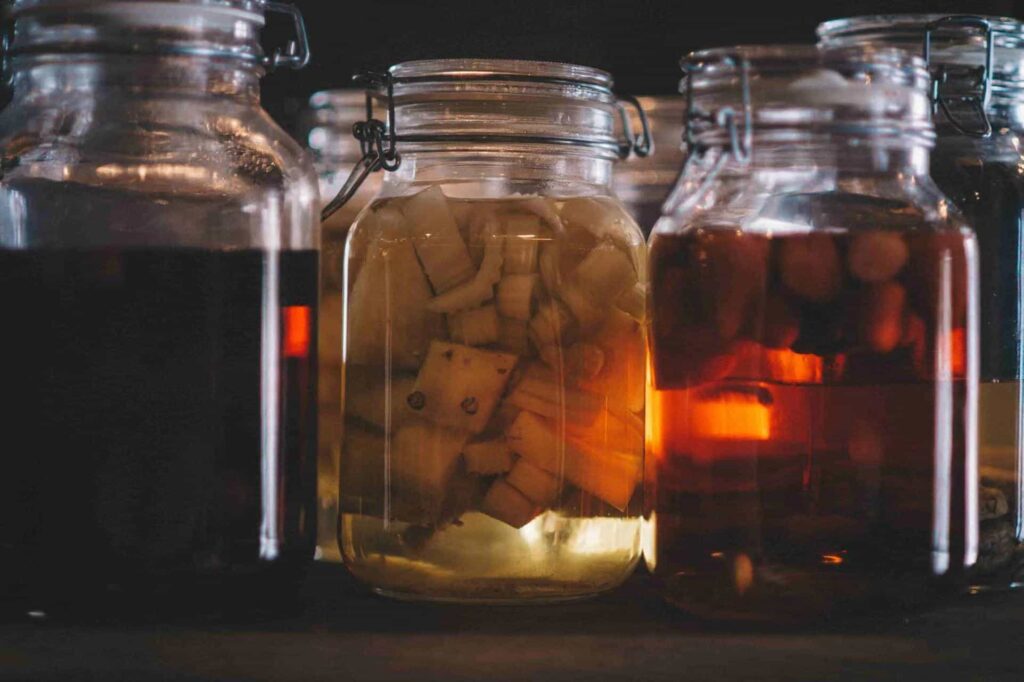
Homemade pickles offer a rich palette for experimentation. You can tailor the flavor profiles by adjusting spices, vinegar types, and the ratio of ingredients to your liking. While it’s not possible with store-bought varieties. This flexibility not only results in a more personalized taste but also allows for the creation of unique flavor combinations that are not available commercially.
The freshness of ingredients in homemade pickles contributes to a more vibrant taste and crunch. Commercial pickles, due to their need for longer shelf lives, might not match the freshness and texture of homemade ones. By controlling the ingredients in homemade pickles, you can ensure that you’re using high-quality, fresh produce free from chemicals and pesticides. Additionally, fermenting pickles at home can produce beneficial probiotics, which are good for gut health. This aspect is often absent or reduced in commercial pickling due to the methods used to ensure shelf stability.
Q8: How do variations in jar size and shape affect the pickling process and the end product?
The size and shape of the jar for pickling play a pivotal role in the pickling process, influencing everything from the efficacy of the brine coverage to the convenience of packing and, ultimately, the quality of the end product. Here’s how these variations can impact the pickling process:
○ Brine Coverage: The primary function of the brine is to ensure that the vegetables or fruits are fully submerged. Which creates an anaerobic environment that facilitates the pickling process. Larger jars, and wide-mouth glass jars, with their wider openings, can accommodate whole fruits or vegetables more easily. In contrast, smaller jars, and narrow jars, with their reduced space, are best suited for slices or smaller items. It can make sure that the brine covers the produce completely without the need for large volumes of liquid.
○ Fermentation and Flavor Development: The size and shape of the jar can influence the fermentation process for fermented pickles. Smaller jars may ferment more quickly due to the smaller volume of brine, which can heat and cool more rapidly. This can affect the speed at which flavors develop and merge. Larger jars are ideal for bulk pickling. But may pose challenges in terms of storage space in your refrigerator or pantry. Smaller jars offer more flexibility for storage and are also more convenient for sharing or gifting.
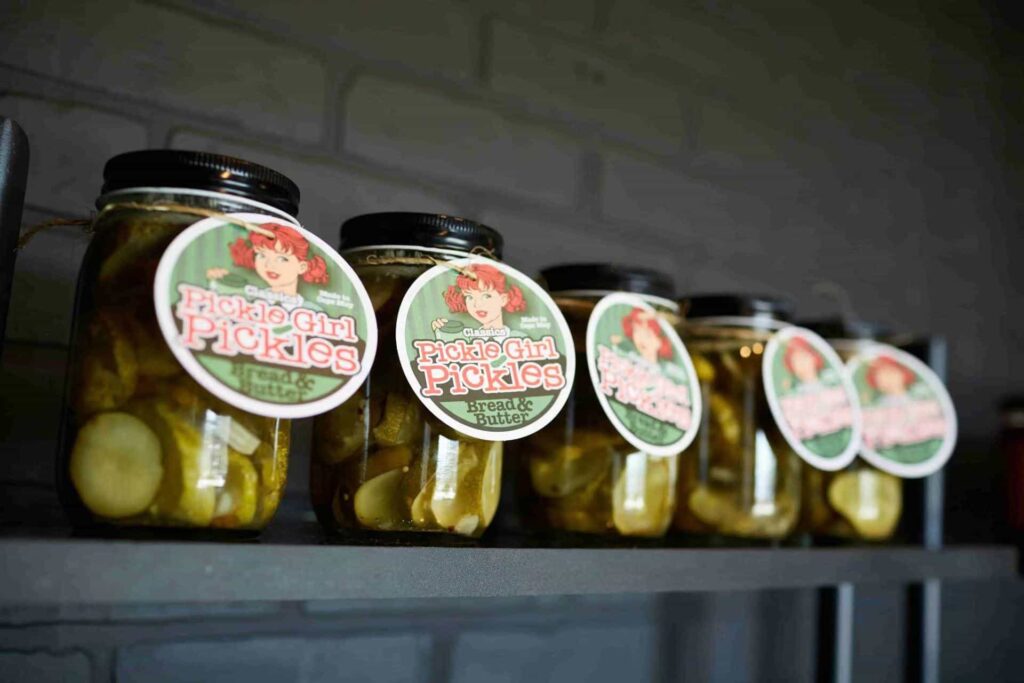
Understanding how the size and shape of pickle jars affect the pickling process and the final product allows you to make informed decisions tailored to your specific needs and preferences. Whether you’re pickling for personal enjoyment, as gifts, or for sale, selecting the appropriate jar size and shape is quite necessary.










